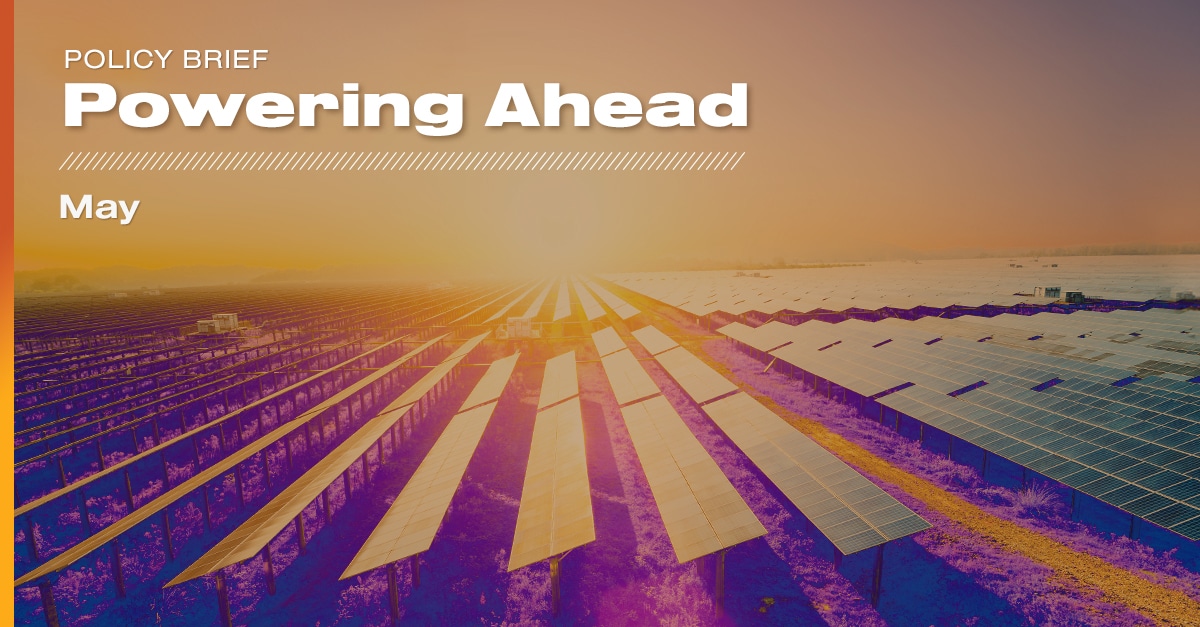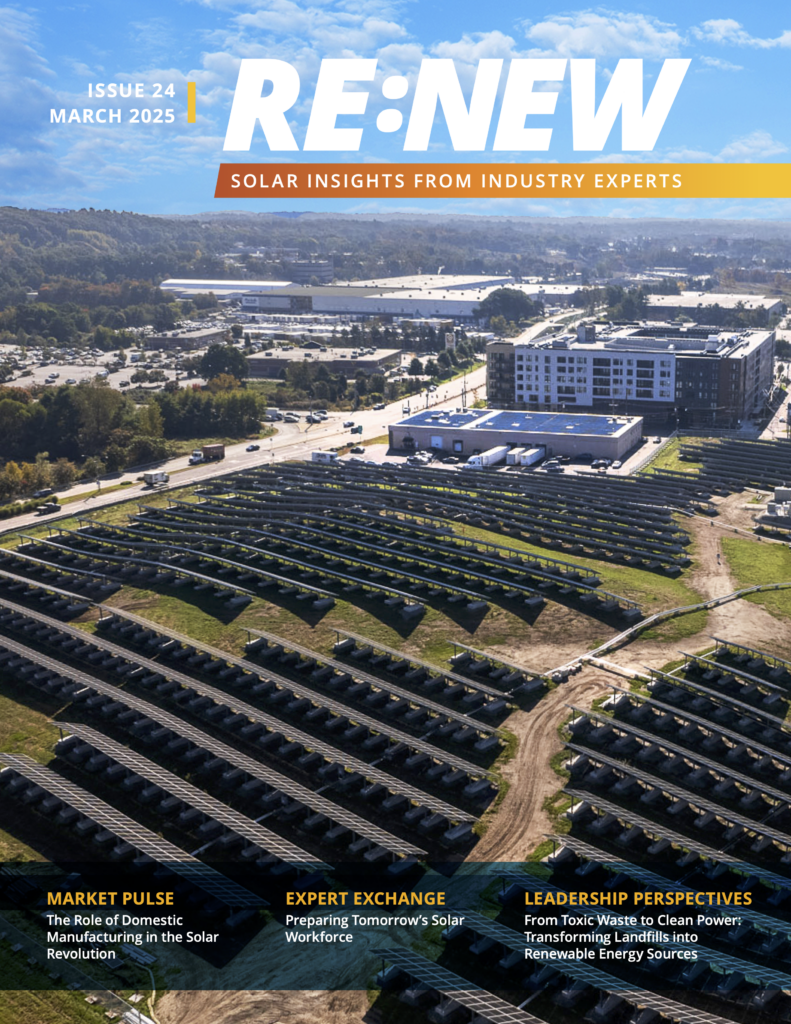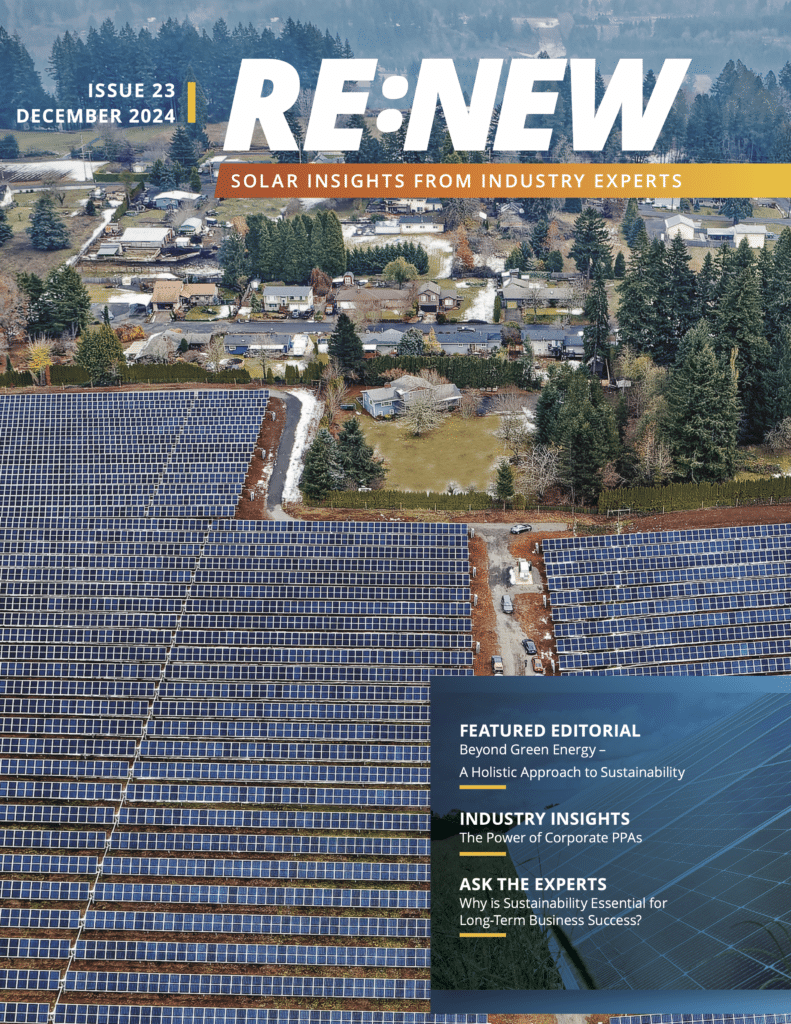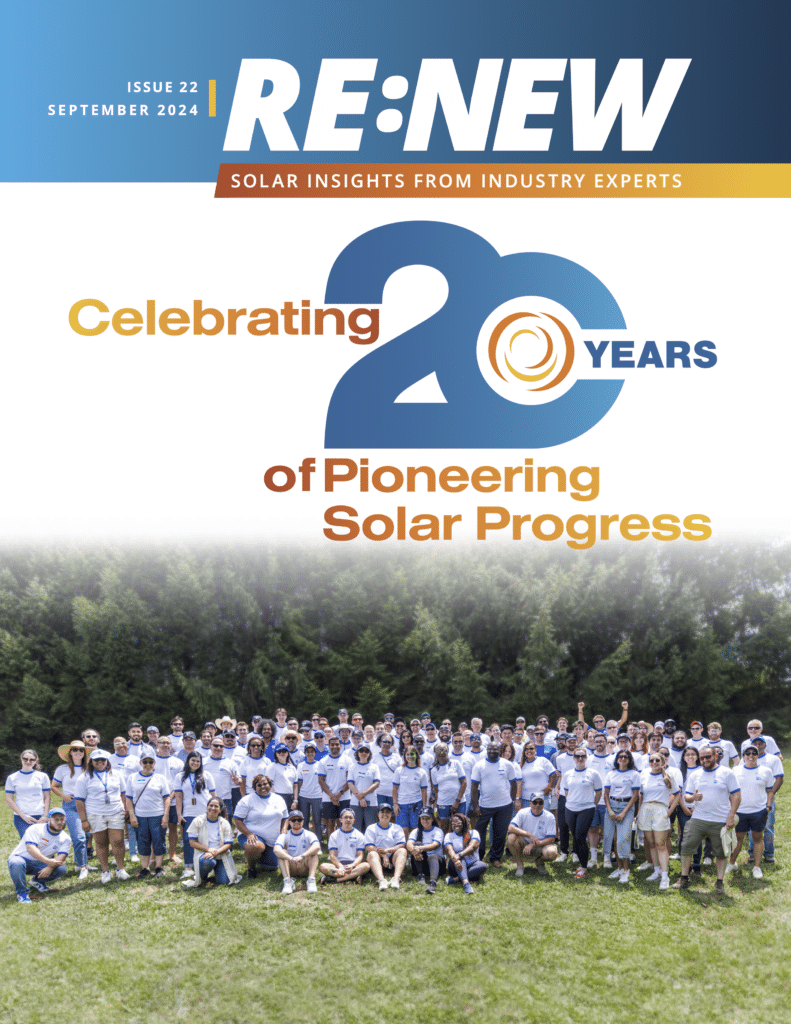Over the past month, there have been notable policy updates at both the federal and state levels. This month’s blog examines the upcoming federal complaint regarding countervailing duties and discusses its implications for the industry. We’ll also discuss the U.S. Department of Treasury (Treasury) and Internal Revenue Service (IRS) updates that could affect future projects throughout the industry.
Significant state-level solar policy developments have also unfolded across various regions. We’ll highlight how states from the Atlantic to the Pacific are actively defining what doing business in their states will mean.
Here are the front and center issues that we are watching as May moves forward:
Federal Updates
Excitement rippled through the solar community as the long-awaited guidance on transferable tax credits under the solar investment tax credit (ITC) was finally unveiled by the Treasury and IRS on April 25. Patient observers were rewarded with clarity on how eligible taxpayers can transfer specific credits to unrelated parties for cash payments starting from tax years after 2022. Alongside this revelation came crucial details on managing excessive credit transfers and recapture events and a mandatory IRS pre-filing registration process to ensure transfer eligibility. For deeper insights, dive into this article from Norton Rose Fullbright.
In another significant development, on March 22, the Treasury and IRS issued Notice 2024-30, expanding guidelines on the energy community bonus. This update identifies an additional 446 US counties potentially eligible for a 10% bonus tax credit for renewable energy projects. While not all counties currently meet the criteria, they reside within statistical areas designated as potential energy communities, with 122 counties meeting both standards as of January 2023 through late May 2024. The SEIA’s mapping tool currently stands as the sole GIS system with these new metrics, with anticipation for the DOE to update their map in May.
Furthermore, on March 29, procedural guidance for the 2024 program year of the Low-Income Communities Bonus Credit Program was issued by the Treasury and IRS followed by a press release on May 13 indicating May 28th opening day for the 2024 Low-Income Communities bonus program. Notably, approximately 325 megawatts of available capacity will rollover to the 2024 program year. This will add to the annual 1.8 gigawatts of capacity for a total of over 2.1 gigawatts of capacity available in 2024.
In April, the Environmental Protection Agency (EPA) announced awards for the Greenhouse Gas Reduction Fund (GGRF), established by the Inflation Reduction Act. The GGRF consists of three programs: the National Clean Investment Fund (NCIF) ($14 billion), the Clean Communities Investment Accelerator (CCIA) ($6 billion) and Solar for All (SFA) ($7 billion).
From the SFA program, 60 awardees, including states, nonprofits, and Tribal Communities, received a portion of the $7 billion to help expand solar access to low-income and disadvantaged communities to build more than 4 GW of solar. Awardees will offer grants, low-cost financing and technical assistance for residential and community solar projects, including workforce training and infrastructure upgrades. The complete list of awardees is available here.
Finally, the tariff question concerning Southeast Asian module manufacturers was filed with the U.S. International Trade Commission. The American Alliance for Solar Manufacturing Trade Committee, made up of companies like First Solar and Hanwha Q CELLS USA, argues that China unfairly subsidizes its manufacturers, which disadvantages U.S. producers.
The complaint aims to ensure a fair market environment for U.S. manufacturers by imposing tariffs on cells, modules, laminates and panels from Cambodia, Malaysia, Thailand and Vietnam. The goal is to ensure critical solar components are traded fairly for the overall success of the solar industry.
Since the complaint was filed on April 24, the preliminary determinations in the countervailing duties case will likely occur around July 18, which could result in companies that import Chinese modules paying estimated duties pending a final determination. Additionally, the preliminary findings in the anti-dumping segment investigations could be issued by Oct. 1, which would also require cash deposits.
Additionally, the Biden Administration’s tariff moratorium stemming from the previous tariff complaint is set to expire in June. The solar industry is analyzing indicators trying to predict whether the administration will extend the moratorium or apply tariffs, independent of the issues raised in the April 24 complaint.
Northeast Update
Three states headline the Northeast update: Maine, Massachusetts and New York.
During Maine’s legislative session, two bills gained traction: LD 2099, which allocates taxpayer funds to the state’s distributed solar and storage program pending PUC approval, and LD 1153, which aims to end property tax exemptions for projects without signed interconnection agreements by June 1, 2024. LD 1153 awaits the governor’s signature after clearing both chambers.
On the regulatory front, the PUC released reports showing the net benefits of the Net Energy Billing program and analyzing Maine’s solar market. Additionally, the PUC issued an Examiner’s Report recommending denial of the Good Cause Exemption for projects in cluster six, citing foreseeable delays and lack of construction progress.
In Massachusetts, we’re still waiting for the Department of Energy Resources (DOER) to issue a straw proposal revealing any revisions to the Solar Massachusetts Renewable Target (SMART) program. A comprehensive energy omnibus bill is also making its way through the state’s Senate. We will keep you updated as new developments occur.
The waiting game continues in New York as we await a decision from the New York State Public Service Commission (PSC) on whether National Grid can impose design changes and additional costs on interconnecting projects at any time before commercial operations. The commission could issue that order at any time. We will keep you posted.
Mid-Atlantic Update
It’s been refreshing to see how much progress the Pennsylvania legislature has made on energy-related legislation, including HB 1842, the community solar bill, which passed the House last month. We are waiting to see how that bill will make it through the Senate’s Consumer Protection & Professional Licensure Committee, to which it was referred on April 22.
The chairman of that committee, Senator Patrick J. Stefano, has indicated he plans to introduce legislation to address the 2020 Hommrich case. While specifics of the bill aren’t known at this time, it is expected to be introduced soon and include language aimed at reforming traditional net metering and virtual net meter aggregation programs. This will most likely include provisions to address the off ramping of merchant generator projects from price to compare to the wholesale avoided cost. It is expected to be similar to Senator Lisa M. Boscola’s bill, SB 1040, introduced in January. While it may restrict some development avenues in the state, it could be used as a bargaining chip to pass the community solar legislation. Stay tuned.
In New Jersey, the Board of Public Utilities (BPU) is expected to release final rules on the Permanent Community Solar Program, followed by rules on the Dual Use Straw Proposal in the very near future.
The Permanent Community Solar Program is ready to start on June 1, offering 225 MWdc of available capacity. An additional 275 MWdc will be released on May 15, the result of legislation passed in January.
Maryland’s legislature adjourned on April 8, concluding with the passage of the Brighter Tomorrow Act, SB 783. The bill mandates rooftop solar contracts to include wildlife barriers to prevent intrusion and damage. Additionally, it extends Renewable Energy Credit (REC) lifetimes from 3 to 5 years and establishes a Small Solar Energy Generating System Incentive Program, providing enhanced incentives for eligible systems. Moreover, it introduces prevailing wage requirements for large solar projects and expands property tax exemptions for community solar facilities while increasing system size limits. Lastly, it allows meter-aggregated net metering facilities to exceed existing size caps from January 1, 2025, onwards, catering to diverse customer categories.
Maryland’s Public Service Commission (PSC) has started the formal rulemaking process for the Permanent Community Solar Program. Initial regulations are expected to be in place by January 1, 2025—a hearing to consider approving the proposed regulations for publication in the state register for May 15.
Rounding out our Mid-Atlantic tour is Virginia, where Governor Glenn Youngkin signed two shared solar plans into existence. The Dominion program expansion, as outlined in SB253/HB106, expands the existing program by 200MW released in two tranches, 50MW immediately followed by 150MW once contingent upon the initial program’s projects achieving 90% subscribed and substantially complete.
Additionally, the ApCo program, as delineated in HB106/HB108, established a 50 MW program that will mimic the structure of the Dominion program. Formal regulations should be established by January 2025. This program is set at 50 MW and does not impose a minimum low- and moderate-income participation requirement.
Midwest Updates
Our primary focus in Illinois lies at the regulatory forefront, particularly as we gear up for the upcoming program year of the Illinois Shines initiative, slated to commence on June 1, 2024. Notably, on Earth Day 2024, the Illinois Commerce Commission concluded its Long-Term Renewable Resources Procurement Plan, marking a significant step forward. We anticipate the swift release of the Program Guidebook, pending any further appeals.
In Michigan, the Democrats won special elections on April 16 and restored a 56-54 majority, which means the legislature will fully reconvene for the first time since November. Our focus will remain on Community Solar legislation in hopes to begin hearings before the summer break.
HB 197 remains stalled in Ohio’s House Public Utilities Committee, which had its fifth hearing on April 22. In this hearing, proponents tried to answer opponents’ criticisms related to cost-shifting, among other distortions. Additionally, there was a discussion of the potential of federal funds to help subscribers cover costs. In an effort to move this bill along, a companion bill was introduced in the Ohio Senate.
Minnesota’s regulators have been busy, approving 42.2 MW of community solar projects under the Low- and Moderate-Income Accessible Community Solar program, with an additional 0.5 MW proposed in the current round of applications. The next tranche of applications is currently open and will close on May 22.
Additionally, we are patiently awaiting a formal order affirming the Commission’s 5-0 vote to transition legacy projects from Applicable Retail Rate (ARR) to Value of Solar (VOS) rates. Once the Commission issues an order, stakeholders will have 20 days to file a petition of reconsideration. Simultaneously, there is a 30-day period from the order’s issuance date to appeal to the Minnesota Court of Appeals. Filing a petition for reconsideration is a prerequisite for appeal.
Western Updates
In the Western region, Colorado’s legislative session concluded without significant progress on Community Solar initiatives. Instead, the focus shifted towards enhancing energy distribution systems through SB 24-218. This bill aims to modernize the state’s infrastructure by improving distribution system planning, implementing customer cost caps for upgrades, and introducing innovative programs like the Virtual Power Plant (VPP) initiative and flexible interconnection tariffs. Prioritizing investments in areas nearing capacity, increasing utility staffing, and emphasizing load flexibility over traditional infrastructure upgrades are among the bill’s key strategies for fostering a more efficient and responsive grid system.
And finally, in California, both sides have submitted opening and reply comments to the California Public Utilities Commission in response to the Proposed Decision issued in March. The CPUC held the Proposed Decision from receiving a vote on May 9, delaying their decision for a second time until May 30. This is a sign that the Commissioners may be reconsidering how they intend to design California’s future community solar program. Stay tuned.
Legislatively, SB 1374 passed through the Senate Energy Committee on a bipartisan basis last week. It will restore on-site net metering for multi-meter properties such as schools, farms, malls and apartment complexes. The Senate Appropriations Committee held a hearing on it May 6, which resulted in the legislation being passed on to the Committee’s Suspense File, meaning A vote-only Suspense Hearing will be held before the deadlines for fiscal committees to hear and report bills to the Senate Floor. Bills will either move on to the Senate Floor for further consideration or be held in committee and under submission.
As always, we will be keeping an eye on all of these legislative and regulatory measures and will keep you updated next month. Until next time!
More Recent Blog Posts
Building an Enduring Solar Legacy in America’s Next Energy Era
June 9, 2025
Rick Berube · 2 min read
Beyond Panels: How The Catholic University of America Cultivates Holistic Sustainability Through Solar
May 13, 2025
John Finnerty · 4 min read
Celebrating 20 Years of Transforming the Energy Landscape
December 12, 2024
Scott Wiater · 5 min read
Honoring Our Past To Build Our Future
November 18, 2024
Scott Wiater · < 1 min read
Most Popular Blog Posts
How To Create A Complete Commercial PV Design Package
CJ Colavito · 7 min read
Navigating Solar Policy in Uncertain Times: Standard Solar’s October Policy Brief
Trevor Laughlin · 7 min read
Neville Williams: Standard Solar’s Standard Bearer
Tony Clifford · 7 min read
Building an Enduring Solar Legacy in America’s Next Energy Era
Rick Berube · 7 min read





Share